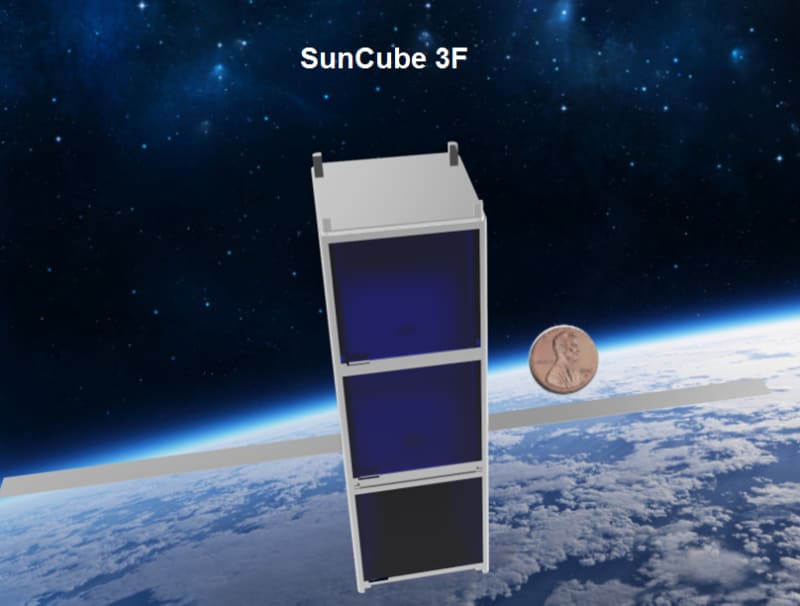

Space exploration can advance rapidly once there is widespread interest, adoption and access by a large fraction of humanity, whose skills and talents can bring new and innovative thinking to the most pressing challenges in the field. One of the major barriers to space exploration is the high rocket launch costs. Nanosatellites such as CubeSats offer a low-cost standard for building and launching miniature spacecraft that can do more with less. However, even these platforms cost $100,000 for a 1U (10 cm x 10 cm x 10 cm) and $300,000 for a 3U to ride to Low Earth Orbit (LEO). These high costs put out of reach most educational institutions, small-businesses and individuals from the ability to build and launch their own spacecraft. However, we have seen significant advances in nanometer-scale low-power, low-cost, high-reliability electronics thanks to the widespread use for smartphones.
Thanks to these advances, we propose the SunCube FemtoSat platform, where a single unit (1F) spacecraft is a 3 cm x 3 cm x 3 cm cube and will have a mass of 35 grams (Illustration 1). Commons configurations include the 1F and 3F (9 cm x 3 cm x 3cm) with a mass of 100 grams (Illustration 2). SunCubes are fully compatible with the CalPoly CubeSat standard. A single 1U CubeSat can hold 27 SunCube 1F FemtoSats or 9 3F FemtoSats. We have developed reference designs that utilize smartphone-class electronics and custom components with a cost of less than $300. The components can be readily mass-produced and requires a conventional workshop for assembly and testing. In comparison, a CubeSat will cost $15,000 to $30,000 in parts. The 1F reference design is comparable to the first generation of CubeSats from 15 year ago. The SunCube 1F in Illustration 1 contains walls covered in 29 % efficiency triple-junction solar cells that provide 0.5 watts in orbit, a 1.5 Wh lithium ion battery, an onboard attitude control system to maintain pointing-direction using electro-magnets, a computer board, on-board radio for UHF communication at 3-8 KBps, onboard 3 MP pixel color camera and radar illuminator. A variant of the 1F (Illustration 3) using a spring and burn-wire mechanism to deploy solar-panels and attain large enough surface area to be tracked by current space traffic monitoring systems and prevent accumulation of space debris. A SunCube 3F will have nearly two thirds of its volume dedicated to custom payloads. Under current market prices, the 1F SunCube will cost $2,700 to launch into LEO, while the 3F SunCube will cost $8,100. The SunCube standard enables anyone to launch a spacecraft starting at nearly 1/40 the price of launch for CubeSats and compete in a rapidly growing market of $50 billion.
The major advantage comes from being able to rapidly re-fly spacecraft experiments, in a few months instead of many years. Our hope is they will kick-start opportunities for all to utilize space in unprecedented ways, including deployment of spacecraft swarms for Earth observation, science and technology development spanning material science, electronics, in-space manufacturing and pharmaceuticals.
Video
-
Awards
-
 2017 Aerospace & Defense Honorable Mention
2017 Aerospace & Defense Honorable Mention -
 2017 Top 100 Entries
2017 Top 100 Entries
Like this entry?
-
About the Entrant
- Name:Jekan Thangavelautham
- Type of entry:teamTeam members:Prof. Jekan Thangavelautham Aman Chandra Mercedes Herreras-Martinez Andrew Warren Prof. Erik Asphaug
- Software used for this entry:Solidworks, Rendering using Keyshot
- Patent status:none








